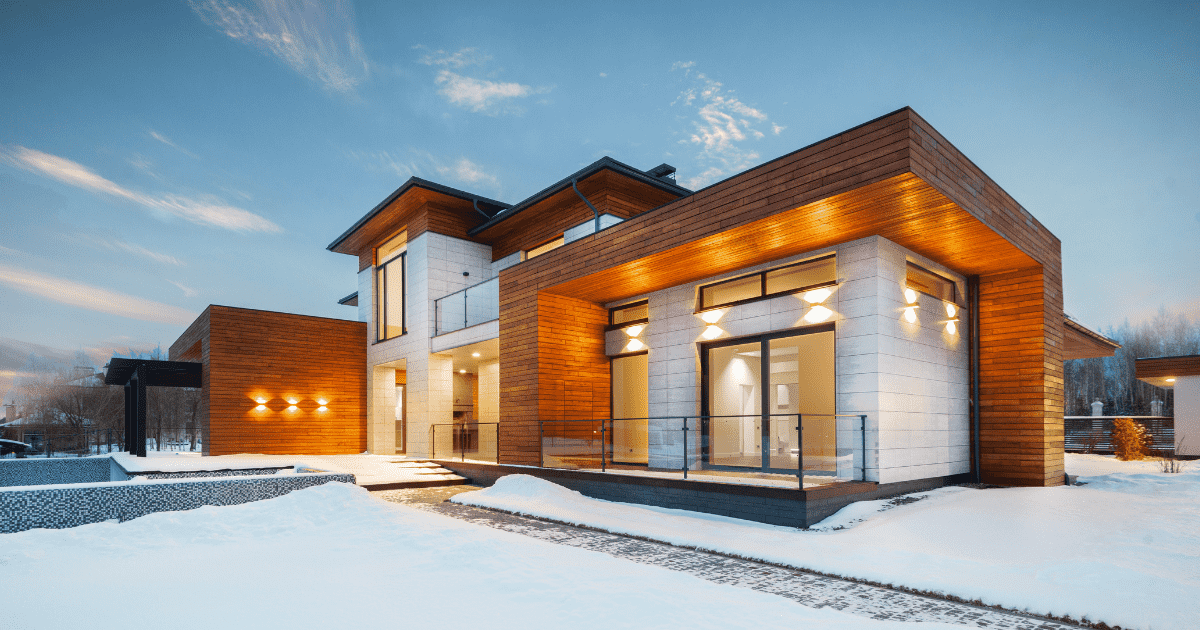The latest statistics show fewer people than ever are failing to plan adequately for retirement. With more people being part of the ‘gig’ economy, planning for a comfortable retirement is more heavily weighted on the individual than ever before.
Creating a healthy, stress-free retirement that you can count on is the key, but is there a sure way to a secure retirement? Although there are no ‘for sures’ in life, a safe and reliable solution is available to generate a potential seven-figure nest egg with some passive income along the way. This is not financial advice, and as always, it is important to do your own research.
Three properties in three years
Here is one possible retirement plan using investment properties as the vehicle. The best part of this theoretical plan is that it is simple; it requires purchasing three properties, ideally one income property per year for the next three years.
As a note, I chose three properties as many lenders cap their mortgage qualification criteria for an individual borrower at four properties: one principal residence and three investment properties. The individual borrower’s ability to mortgage qualify is also a factor and is a topic for another article.
To clearly explain this program, we will use easy numbers that will remain consistent for each property.
In this example, we will consider the purchase of a duplex (which could be a single family with a suite) at $750,000. We will consider a down payment of 20 per cent loan-to-value (investor deal), making the initial mortgage balance roughly $600,000 and let’s say the gross monthly rental income is $5715 per month for the two units.
Expenses are property taxes of $450/ month; property insurance of $150/month; heating (gas) of $625/month; water/sewer of $75/month, and let’s say the tenants pay for electricity, internet etc. We will also consider a five per cent vacancy allowance of $275 per month. Our total monthly expenses (not including the mortgage) are $1,575.
The biggest expense we pay is an expense the banks want us to ignore
The mortgage is at a five-year fixed rate of 6.19 per cent with a 30-year amortization. This results in a monthly payment of $3,640.49. For ease of numbers, let’s use $3,640. When we add the mortgage amount to the expenses, we get a total of $5,215. Subtracting this from our rental income, we have a $500 positive cash flow (passive income).
The second part of the program concentrates on mortgage paydown. The biggest expense we pay in our real estate investing careers is an expense the banks want us to ignore because this is where they make huge profits. This expense is mortgage interest. At the beginning of any mortgage, the interest portion far outweighs the principal.
If you are an investor with the thought of holding on to your property for a number of years, you can increase your profits on the property by paying the mortgage off as fast as possible. In our example, the interest expense is $36,470 in the first year or $3,039 per month on average. You’ll notice the bank is making over six times your profit, but not to worry; we will curtail that expense somewhat, so keep reading.
If everything remained the same and we held the property for 30 years, the interest paid over that time would be $533,054.74. Our strategy here is to pay a lump sum yearly, which goes directly toward the principal. This reduces the interest paid over time and decreases the time it takes to pay off the mortgage. But we are not done. We are going to super-charge this process.
Prioritize paying down the mortgages
In year two, a second property gets purchased. For ease of this example, let’s say it is the same property makeup with the same numbers, which includes $500 per month in cash flow. The strategy here is to gang up on the mortgage of property one. This means instead of a $6000 lump sum (which we made at the beginning of year two on property one using the extra cash flow), we make a $12,000 lump sum towards property one’s mortgage at the beginning of year three. This reduces the principal amount of property one’s mortgage.
At the beginning of year three, a third property gets purchased. For ease, we will assume the same numbers, which include a $500 per month cash flow. We’ll continue this strategy of paying down the mortgage on property one. Using the extra cash flow from all three properties, we can put an $18,000 lump sum payment in year four towards the principal of property one’s mortgage. We continue to do this until year 17, when property one’s mortgage is fully paid off. Now things can scale rapidly.
With no mortgage on property one, the monthly cash flow is $500 plus $3,640 (the previous mortgage payment), totalling $4,140 plus another $1,000 from properties one and two. You now have $61,680 annually, which can go towards property two’s mortgage.
If you have been keeping track, property two has been owned for 16 years, and this mortgage has been paid down to $410,336. Now we are paying an annual lump sum of $61,680 toward property two’s mortgage. This gets paid down to zero in only four years.
Let’s look at the totals with no mortgage payments on properties one and two:
Property one: $500/month cash flow plus a former mortgage payment of $3,640/month
Property two: $500/month cash flow plus a former mortgage payment of $3,640/month
Property three: $500/month
This totals $8,780 per month or $105,360 annually.
Now it’s property three’s turn. Property 3 has been owned for 20 years at this point and has an outstanding mortgage balance of approximately $326,260. With annual lump sum payments of $105,360 on top of the regular mortgage payment, it takes under three years for this property to become mortgage free.
Let’s go over the results of what approximately 22 years have brought us, starting with the downside.
Our total out-of-pocket expenses for down payments and closing costs on three properties will be approximately $450,000. Using joint venture partners with the same philosophy can be the best solution if you don’t have all the money or mortgage-qualifying capabilities.
The other downside, if you can call it that, is the program takes over 22 years to complete. For most of us, 22 years will come and go anyway, so you might as well be creating this retirement plan for yourself and your family.
What about the income?
Let’s look at the upside of the plan. In 22 years, you now have three paid-off properties, once worth $2,250,000 in total. In 22 years, these properties will have more than doubled in value, so owning $6,000,000 in free and clear real estate is feasible.
What about the income? Without inflation, you are making $12,420.00 per month with no mortgage payments (and even assuming the same numbers 22 years later). That’s almost $150,000 annually! Not a bad nest egg coming in each year, not to mention by using this program, you have also saved hundreds of thousands in interest payments!
Will the numbers program fluctuate? Of course, they will. Expenses will go up with inflation, but so will your rents. Will you have vacancies? Yes, but you have allotted for that in your vacancy reserve fund. Will you have repairs? Naturally, things will happen that will alter this example. Still, you have seen that utilizing this program can eliminate many interest payments and build equity much faster than in a regular amortization schedule.
Here’s the bonus to this strategy: should you have the mortgage qualification ability…this strategy works even faster the more properties you acquire and dedicate to this program.
I wish you a happy and prosperous retirement! Are you in?

Gord Lemon has invested in residential and commercial real estate in Ontario, British Columbia, Alberta, Florida, Arizona and Texas for over 30 years. Over the last 20 years, Gord has shared his experience and knowledge as a real estate investment trainer, and coach with over 25,000 students in Canada and the U.S. Gord is a published author, having written dozens of articles as a regular contributor to Canadian Real Estate Wealth Magazine, the REIN Report, and the Huffington Post. Gord created the InAgent Designation Training, which provides agents with the critical knowledge, tools and skills required to work seamlessly with real estate investors. For more information, go to www.InAgent.com



















…Looks wonderful on paper. …..but, then you get a non paying tenant and rent doesn’t come in and tenants are wrecking your place —-Landlord and Tenant hasn’t scheduled hearing for us and it is now over a year and a half …..Investing in rentals with an undependable and ineffective LTB —is not a sure or stress free way to keep rent coming in. Many small time owners cannot handle bad renters and I find fewer people want to invest by being a landlord. Yes, we do need more rentals—but LTB needs to stand behind the good landlords.
Marylon
You are absolutely correct with regard to the ltb not being very effective. It just makes tenant selection crucial and you can still get a bad one. The other important item not mentioned is the tax aspect once you pay off the property and have few expenses. Government can take a good chuck of it every year. However, the concept is concrete but not for the timid or faint of heart.
Have you considered the tax implications on the principle portion of the mortgage?
I have a property that carries itself with the mortgage payments however every year I have to ‘donate’ money to pay the income taxes on the property due to the principle portion ‘profit’ which is essentially hidden in the carrying cost.
Some valuable comments here.
As a landlord of close to 40 years, I see holes in this: consider renewing mortgages at higher rates, vacancies of 25% (this has happened), and there seems to be no accounting for major expenses as new roofs, plumbing, flooring or major repairs.
Consider too, dealing with tenants in your senior years.
Governments have slanted all the rules in favour of tenants and are truly enjoy spending the tax dollars generated by the hard work and risks taken by “Mom & Pop”.
So many variables. 1) how many buildings making 60k per year sell for 750k. Almost none. They sell for way more. And rarely fully rented making 60k/y. 2) how did the second downpayment happen a year later? Every one is limited by their downpayment. 3) yes there is money in having your tenants back the mortgage. To make all this happen, the price and the incomes have to match up. On paper, in these examples, they sound nice. In reality, the income is rarely greater than the mortgage these days. Leaving little for repairs and other expenses.
I agree with the logic. Incomes – expenses = cash flow + equity by having tenants pay back mortgage + appreciation with time. However In today’s interest rates, it is nearly impossible to find such products because the expenses are always greater than the incomes. The harder it is to afford a building, the harder it is to maintain it, let alone hold it for years to reap rewards.
“The latest statistics show fewer people than ever are failing to plan adequately for retirement. With more people being part of the ‘gig’ economy, planning for a comfortable retirement is more heavily weighted on the individual than ever before. ” … After bills are paid and groceries bought, there’s no money left for fun let alot saving for a future.